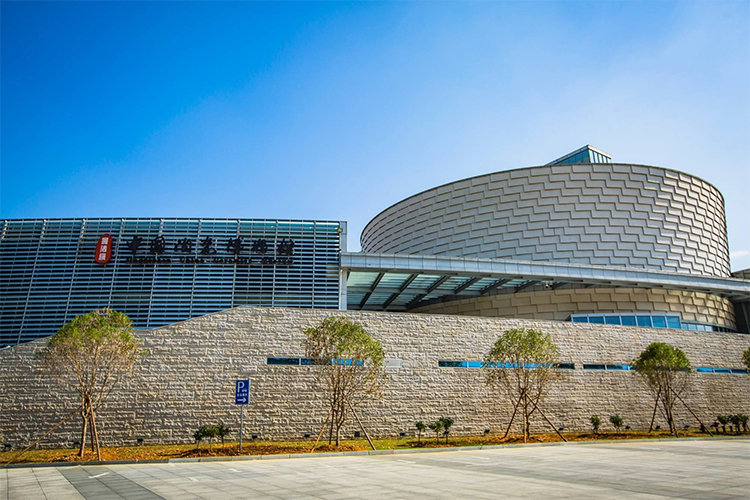Jingdezhen Porcelain Museum: A Visitor’s Guide to Porcelain History in China
Introduction: Step into a Time Tunnel of Ceramics
In Jingdezhen, Jiangxi Province, a modern building inspired by ancient kilns quietly rises—this is the China Jingdezhen Porcelain Museum. As the nation’s largest specialized porcelain museum with the richest collection, it reads like a three-dimensional epic of Chinese ceramics: from rustic Neolithic pottery to supreme Ming and Qing imperial wares, and on to innovative works by contemporary artists. Walking its halls feels like crossing millennia and touching the soul of China’s porcelain capital.
1. Museum Highlights and Positioning
The China Jingdezhen Porcelain Museum is the country’s only national-level museum dedicated to ceramics and a must-visit for global ceramics enthusiasts. Under the theme “This is the peak of the porcelain industry,” it systematically traces the development of Chinese ceramics and emphasizes Jingdezhen’s unique status as a thousand-year porcelain capital. Scholars, art lovers, and casual visitors alike will find the museum’s displays compelling and educational.
2. Architecture and History: A Modern “Kiln” Is Born
The new museum building opened in 2015 and was designed by a prominent architect who drew inspiration from traditional wood-fired kilns. The exterior’s flowing curves evoke the fusion of flame and clay. Inside, the museum covers 55,000 square meters with an open layout and a glass dome that lets natural light enliven the porcelain displays.
More than a display space, the museum symbolizes Jingdezhen’s ceramic culture. In 2020 it was rated a national 4A tourist attraction, becoming an important landmark for cultural tourism in Jiangxi.
3. Treasures and Core Exhibits
The museum’s collection exceeds 50,000 ceramic pieces, spanning from the Neolithic era to the present. Several signature treasures stand out:
– Yuan blue-and-white peony branch-pattern meiping: A pinnacle of Yuan dynasty blue-and-white porcelain—luminous glaze and intricate motifs that reflect Jingdezhen’s advanced kilns in that era.
– Ming Yongle ivory-white monk’s-cap ewer: A classic product of Ming imperial kilns with fine body and snowy glaze, representative of Yongle period white wares.
– Qing Qianlong famille-rose openwork rotating vase: An extraordinarily complex craft object with a rotatable body, showcasing Qing imperial kiln artisans’ supreme skill.
The museum also features a modern and contemporary ceramics gallery that displays innovative works by 20th- and 21st-century artists, illustrating how the medium continues to evolve.

4. Exhibition Narrative and Cultural Experience
Permanent exhibits are organized by chronological sequence plus thematic sections:
– Ancient Ceramics (Neolithic to Ming–Qing)
– Jingdezhen’s Ceramic Development (Song–Yuan to modern times)
– Modern and Contemporary Ceramic Art (20th century to today)
Visitors can admire masterpieces across eras and deepen their understanding through multimedia interactives, hands-on pottery experience areas, and contextual displays that explain making techniques and cultural meaning.
5. Visiting Atmosphere and Audience
Typical visitors include ceramics collectors, art students, and cultural travelers. The museum’s atmosphere is calm and richly artistic. With spacious galleries and well-designed visitor flow, guests can explore at their own pace without feeling crowded.
6. Practical Guide: How to Visit Efficiently
Suggested visit routes:
– Quick Highlights (1–2 hours): Head to the second-floor highlight gallery of signature treasures → Ming and Qing official kiln masterpieces → modern and contemporary ceramics gallery.
– Deep Immersion (3–4 hours): Follow the chronological route from ancient to modern, including the creative workshops and cultural retail area.
Best times to visit:
– Weekdays (Tue–Fri): fewer visitors for a quieter experience.
– Weekends (Sat–Sun): may host school groups; arrive early in the morning if possible.
Who it’s for:
– Art lovers: ideal for in-depth study of stylistic development.
– Families: interactive zones are great for children to try hands-on activities.
– Photographers: the architecture and exhibits offer excellent photo opportunities.
Nearby combination recommendations:
– Ancient Kiln & Folk Customs Expo Area (hands-on traditional ceramic crafts)
– Taoxichuan Creative Block (modern art and ceramics market)
– Imperial Kiln Site (Ming–Qing royal kiln ruins)

7. Useful Tips
Guided services:
– Audio guides: available in Chinese and English.
– Free scheduled tours: mainly in Chinese; check for English sessions in advance.
– AR interactive guides: scan codes on select exhibits for 3D views.
Tickets and reservations:
– Admission: free (special exhibitions may charge).
– Reservations: book via the official WeChat account; foreign visitors should register with passport details for real-name booking.
– Payment: WeChat Pay and Alipay accepted; international credit cards may require on-site purchase.
Facilities and services:
– Wi-Fi: free, full-venue coverage.
– Dining: a tea house and light meals available on site.
– Accessibility: wheelchair ramps and accessible restrooms are provided.
8. Local Picks: Hidden Ways to Enjoy the Visit
– Museum shop: buy Jingdezhen specialty ceramics and souvenirs.
– Best photo spots: the central atrium’s spiral stairwell, where light and shadow are especially photogenic.
– Avoiding crowds: visitor numbers often dip after 3 p.m., good for a quieter, more contemplative visit.

9. Essential Information
– Name: China Jingdezhen Porcelain Museum
– Address: No. 1 Zijin Road, Changjiang District, Jingdezhen, Jiangxi Province
– Opening hours: 9:00–17:00 (last entry 16:30); closed on Mondays
– Transportation:
– Bus: take routes 1 or 5 to ‘Porcelain Museum’ stop
– Car: free parking available outside
– Taxi: about 15 minutes from Jingdezhen city center
Conclusion: A Visual Feast of Ceramic Art
The China Jingdezhen Porcelain Museum is more than a museum—it’s a living history of Chinese ceramics. Whether you are a devoted collector or a first-time visitor, the museum offers a vivid experience of clay and fire intertwined across millennia. Don’t miss this ceramic shrine when you visit Jingdezhen.


